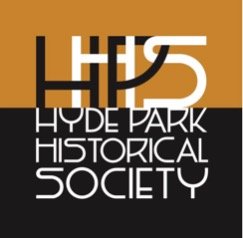ABOUT ALFRED CALDWELL
Information Taken from HPHS Newsletter Summer 2001, Written By Stephen A. Treffman
Alfred Caldwell, the landscape designer of Promontory Point, was a poet, landscape architect, civil engineer, city planner, philosopher and distinguished professor. He was born in St. Louis, Missouri in 1903. lo 1909 his family moved to Chicago. He attended Ravenswood Elementary School and Lake View High School, where he became fascinated by the study of botany and Latin. After a brief but unhappy stint in the landscape architecture program at the University of Illinois, Caldwell managed to land a job in 1924 as an assistant to Jens Jensen, the highly respected Chicago landscape architect. Jensen would ultimately characterize Caldwell as a "genius." In 1927, Caldwell befriended and was profoundly influenced by Frank Lloyd Wright.
The onset of the Depression broke up Jensen's firm and from 1931 to 1934, Caldwell was in private practice as a landscape architect. From 1934 to 1936 he served Dubuque, Iowa as its Superintendent of Parks and created the renowned Eagle Point Park there. He returned to Chicago in 1936 to join the Chicago Park District as a landscape designer. It was during this period that he worked out the design for Promontory Point and planned the Lily Pool and Rookery in Lincoln Park. lo the course of this work he met Ludwig Mies van der Rohe, who later played a major role in the evolution of Caldwell's-career.
Caldwell left the Park District to join the U.S. War Department in 1940 and worked as a civil engineer on the design and construction of several military training posts. At the end of the war, Mies called upon Caldwell to join the architecture faculty at the Illinois Institute of Technology. In 1945 IIT awarded
Caldwell a Bachelor of Science degree in Architecture and, in 1948, a Master of Science degree in City Planning. His major collaborative work with Mies was as the landscape designer for the UT campus. He abruptly resigned from IIT in 1960 in protest of Mies' ouster as official architect of the school.
From 1960 to 1964 Caldwell was employed by the Chicago Planning Commission. He returned to higher education as a Visiting Professor at the Virginia Polytechnic Institute in 1965 and later that year was appointed Professor of Architecture at the University of Southern California, retiring in 1973. He maintained a private practice until 1981 when he rejoined IIT as the Ludwig Mies van der Rohe Professor of Architecture. Proclaimed the last of the Prairie School landscape architects, he died at his home in Bristol, Wisconsin in 1998.
Caldwell's plans for the landscaping of PromontoryPoint were very precise. Each tree and shrub was carefully located and designated by its proper Latin. name. Not usually recognized is that his plans included not only the area popularly considered the Point, that is, the land east of the South Outer (Leif Ericson) Drive at 55th Street, but also the park areas on the west side of the Drive from about 5450 to
5555 South Shore Drive. Parenthetically, it is at 5530- 32 South Shore Drive that the Mies designed, and aptly named, Promontory Apartments now stands.
Although many changes in the landscaping in this area have occurred since Caldwell's day, a few trees surviving from his original planting some 65 years ago can still be found, the largest number of them probably along South Shore Drive. The lake has undermined the base of the limestone revetment around the Point to the extent that, at some spots, gaps large enough to swallow a small child have emerged between some of the seawall's stone blocks.
Sources on Caldwell: The standard source, including an extensive bibliography, is Dennis E. Domer, ed., Alfred Caldwell: The Life and Work of a Prairie School Landscape Architect (Baltimore: Johns Hopkins
University Press, 1997). Darner's obituary for Caldwell may be found in the IIT Catalyst (Summer, 1998). See also Werner Blaser, Architecture and Nature: The Work of Alfred Caldwell (Basil and Boston: Birhauser Verlag, 1984). The Art Institute of Chicago library has a transcript of a lengthy interview conducted with Caldwell.


